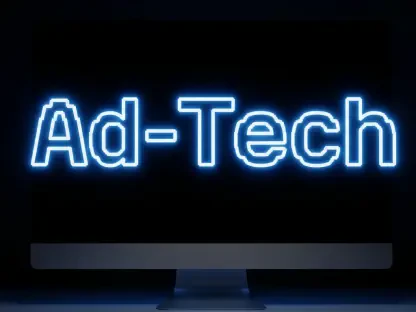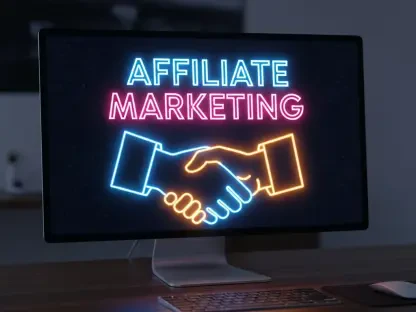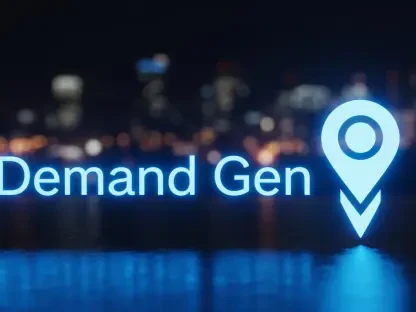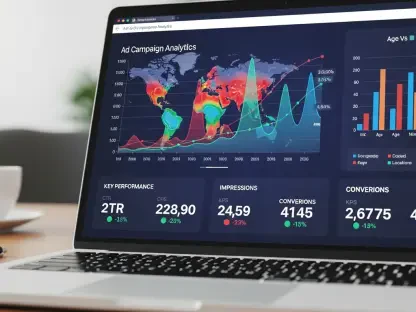In the fast-paced world of eCommerce, marketers are constantly grappling with the challenge of achieving rapid growth while maintaining sustainable profitability, especially as customer acquisition costs soar across major platforms and consumer demands for personalization and speed intensify. Finding traffic sources that are both cost-effective and scalable has become a critical priority for success. This article dives into a remarkable case where a media buying team generated over $833K in eCommerce sales with a consistent return on investment (ROI) ranging between 20–30%. The strategy hinged on leveraging push notification ads, paired with meticulous testing, scaling, and optimization processes. With insights from industry experts, the focus here is on how structured approaches and smart traffic management can deliver repeatable results across diverse projects. The following sections break down the campaign framework, performance metrics, and actionable strategies that other marketers can adopt to replicate similar success in their own initiatives.
Understanding the Campaign Foundation
The backbone of this impressive achievement lies in the strategic setup of two distinct eCommerce projects managed by a skilled advertiser. One project targeted a global online marketplace offering a vast array of products, while the other focused on a fast-fashion retailer catering to younger demographics in Western markets. Both operated on a commission-based affiliate model, tying revenue directly to completed sales. To control costs, CPA Goal bidding was employed, enabling automatic bid adjustments to meet specific cost-per-action targets. Real-time tracking through postback integrations provided immediate insights into spend versus performance. After extensive testing, push notifications emerged as the dominant ad format due to their instant visibility on mobile devices, scalability across regions, and ability to facilitate rapid creative and landing page experiments. Other formats like In-Page Push and Survey Exit were also used, but push ads consistently outperformed in volume and ROI.
This foundation was critical to ensuring that every dollar spent was aligned with measurable outcomes. The choice of push notifications was not arbitrary; it was driven by their unique ability to capture attention in a crowded digital space, particularly on mobile platforms where eCommerce transactions are increasingly concentrated. The affiliate model further incentivized precision, as revenue depended on actual conversions rather than mere clicks or impressions. By integrating real-time data feedback loops, the team could pivot quickly, refining their approach to focus on what worked best. This initial setup underscores the importance of selecting the right tools and models tailored to specific business goals, setting the stage for the detailed testing and scaling phases that followed.
Phased Testing and Scaling Methodology
The campaigns were built on a structured, phased approach designed to minimize early risks while steadily building momentum. The preparation phase kicked off at least one week before major shopping events like Singles’ Day, Ramadan, or Black Friday. This early start allowed algorithms to collect crucial data, mitigating the unpredictability of last-minute launches during peak demand periods. In the initial testing window of days 1–7, the emphasis was on broad data gathering through A/B testing of landing pages, geographic regions (GEOs), and creatives, alongside close monitoring of zone-level performance. Early conversions often lagged, highlighting the need to resist hasty decisions and wait for data to stabilize before making adjustments.
Following this, the growth expansion phase from days 8–20 saw budgets ramped up for high-performing zones, while underperforming sources were culled. CPA targets were dynamically tweaked to safeguard profitability during this scaling effort. Beyond day 20, the focus shifted to continuous improvement, with low-conversion zones excluded every two weeks. Monthly reports also identified traffic sources with high cancellation rates, ensuring budgets were redirected to more reliable segments. This methodical progression balanced scale with efficiency, turning insights from testing into sustainable growth. The phased lifecycle demonstrates how patience and incremental adjustments can prevent costly missteps, providing a blueprint for managing complex eCommerce campaigns effectively over time.
Analyzing Performance Metrics and Outcomes
The results of these campaigns offer compelling evidence of the power of push ads when executed with precision. For the global marketplace project, which ran for over a year, total sales surpassed $833K with an average ROI above 20%. Performance varied across months, with a notable peak in one month reaching a 225% ROI on a $30K spend, generating nearly $99K in revenue. Top-performing GEOs included a diverse mix of markets such as Mexico, France, Spain, Israel, and Brazil, among others. The broad product range resonated particularly with price-sensitive users in emerging markets, where Android devices dominated traffic, emphasizing the value of platform-specific targeting in optimizing campaign reach and impact.
In contrast, the fast-fashion retailer project, spanning 4–5 months, achieved an average ROI of 39.7%, fueled by strong engagement from Gen Z and millennial shoppers in Tier-1 markets. Alongside push ads, formats like In-Page Push for iOS and Survey Exit were utilized, with iOS traffic consistently outperforming Android in premium regions due to higher conversion rates linked to greater purchasing power. These contrasting outcomes between the two projects highlight how device distribution and market demographics can shape campaign success. Together, the results affirm that sustained investment in push traffic, backed by rigorous optimization, can drive both scale and profitability across varied eCommerce niches, offering valuable lessons for tailoring strategies to specific audience behaviors.
Key Optimization Tactics for Success
Achieving these results required more than just selecting the right ad format; it demanded systematic optimization across multiple dimensions. Zone oversight was pivotal, with bi-weekly audits identifying and blacklisting traffic zones with low conversions or high cancellation rates, thereby reallocating budgets to stronger sources. Adaptive bidding further enhanced efficiency by using dynamic CPA bidding to adjust bids in real-time based on conversion value through postback data, ensuring spend remained proportional to profitability. Seasonal planning also played a crucial role, with campaigns timed to launch a week before major shopping events to optimize algorithms ahead of traffic surges, capitalizing on peak consumer activity.
Additionally, landing page trials were conducted extensively during the initial phase, testing variations from standard product pages to seasonal sales links to identify top performers based on hard data rather than assumptions. Audience division focused on device and GEO segmentation, tailoring creatives, bidding, and landing pages to Android users in budget-conscious markets and iOS users in higher-income regions. These strategies created a robust feedback loop, preserving campaign health while maximizing scaling opportunities. The emphasis on continuous refinement over one-off tactics ensured that profitability was not a fleeting achievement but a sustained outcome, providing a model for other marketers to emulate in their own efforts to balance growth with efficiency.
Valuable Lessons for eCommerce Growth
Beyond the specifics of push traffic, several broader lessons emerged from these campaigns that can inform eCommerce strategies. Patience with data proved essential, as early conversions often lagged, underscoring the need to allow time for results to stabilize before altering plans. Premature decisions risked cutting potentially profitable zones, a pitfall avoided through disciplined waiting. Device-based targeting also revealed critical consumer behavior patterns, with Android excelling in emerging, budget-conscious markets and iOS delivering superior conversion rates in premium regions. Aligning campaign setups with these trends was key to maintaining a strong ROI across diverse markets.
Further insights include the synergy between influencer activity and performance ads, particularly in fashion eCommerce, where influencer visibility created demand that paid campaigns could then capture. This interplay between earned and paid channels amplified results significantly. Additionally, the emerging trend of gamification in eCommerce, such as rewards and bonus systems, was noted as a potential growth lever. Understanding how these dynamics influence user engagement could unlock new opportunities for performance marketers in future campaigns. These takeaways emphasize the importance of adaptability, strategic integration of multiple marketing facets, and forward-thinking approaches to evolving consumer trends in achieving long-term success.
Reflecting on Achievements and Next Steps
Looking back, these campaigns showcased the potential for eCommerce advertisers to achieve remarkable scale and sustainability through the strategic use of traffic sources, bidding models, and optimization practices. Generating over $833K in sales with an average ROI of 20–30% highlighted the reliability of push notifications as an acquisition channel when paired with structured testing and disciplined scaling. The success was rooted in ongoing refinement—testing landing pages, aligning with seasonal demand, managing traffic zones, and adapting to device and market conditions—rather than relying on short-term wins. This disciplined approach turned challenges into consistent profitability.
For marketers aiming to build on such results, the next steps involve exploring how to integrate push ads into broader acquisition strategies while staying attuned to emerging trends like gamified shopping experiences. Experimenting with device-specific targeting and seasonal timing can further enhance campaign outcomes. Additionally, partnering with platforms that offer high-quality traffic, advanced tools, and expert guidance can provide the edge needed to surpass these benchmarks. The path forward lies in leveraging data-driven insights and continuous optimization to navigate the evolving eCommerce landscape, ensuring that growth remains both achievable and sustainable over time.









